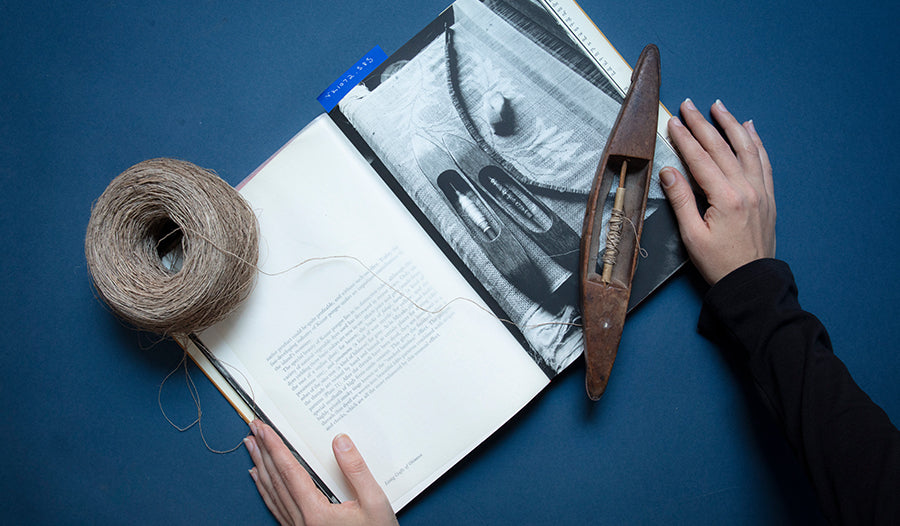
AN INTERVIEW WITH JORDANA MARTIN
 Image: All images (unless stated) © Jordana Munk Martin
Image: All images (unless stated) © Jordana Munk Martin
Jordana Munk Martin is the founder of TATTER, an organisation dedicated to the examination and celebration of the essential role of cloth in human life. She launched a unique textile research space and education facility in Brooklyn, NY, for the purpose of textile study, visual inspiration, and scholarship. Blue: The Tatter Textile Library is home to over 6,000 books and textile objects.
We're delighted that Jordana is taking part in this week's Selvedge Textile Literary Festival. We spoke to her ahead of the event about 'Blue' and how textiles and storytelling are intrinsically linked:
 Image: Jordana Munk Martin. Photograph by Justin Bishop.
Image: Jordana Munk Martin. Photograph by Justin Bishop.
Please tell us a little bit about yourself for our readers! What does a normal day look like for you?
I am an artist by training, but these days rather than a making practice my work is a social practice. An art installation in the shape of a library. A living sculpture which contains a research capability.
My days are spent developing ways to make our books speak their enduring relevance through creative programmatic opportunities.
Where did your interest in textiles begin?
My interest in textiles began in the home of my maternal grandmother, Edith Wyle. A space laden with cloth. She was a great collector and visionary.

What inspired you to create the Tatter Textile Library? What do you consider to be your greatest acquisition to date?
Tatter library was created not just to preserve knowledge about textiles, but also to preserve the lifelong collections of women. Women who collected textile related objects or amassed library collections in different areas of textile focus. Those collections reflect the wanderings, interests and personal evolutions of the collectors.

Why 'Tatter' and why 'Blue'?
To me, ‘Tatter’ means beloved cloth over time. Cloth imbued with evidence of human life and human story. The library is saturated in blue to remind us that textiles aren’t neutral. In fact they are fraught and political and subject to all of the same tensions. Blue has had a particularly fraught history in the history of textiles. And yet it retains its compelling beauty.

Our Textile Literary festival explores the idea that storytelling and cloth are intrinsically linked. Is this your view? Why?
Yes. Storytelling and cloth are absolutely linked. Any given piece of cloth connects you to those that made it, the resources used to make it and to the eventual story/ stories of the wearer.
What is your favourite textile-related book and why?
I have too many favorite textile related books. Here are three: ‘On Weaving’ by Anni Albers, ‘The Primary Structure of Fabrics’, Irene Emery, and ‘Embroidery' by Francoise Teller-Loumagne.

Is there a textile object in the library that you are particularly fascinated by? Why is it important to have objects as well as books in the same learning space?
Textile objects animate the static information within the books. They make the information tactile and touchable. I am fascinated by all of the tools, especially tools from disparate places - spinning wheels from different continents. I love our collection of darners which contains more than 600. The unique shapes of the darners speak to the unique shapes of garments throughout history.

Our first Textile Literary Festival will comprise three acts examining the varied literature forms that reveal and document the history and culture of cloth: fiction that features textiles through narratives, non-fiction that researches historical and contemporary cultures and stories of textiles, and a panel discussion bringing together publishers and bookshop owners who specialise in textiles.
Book your ticket and find out more here:
Image: All images unless stated © Jordana Munk Martin

